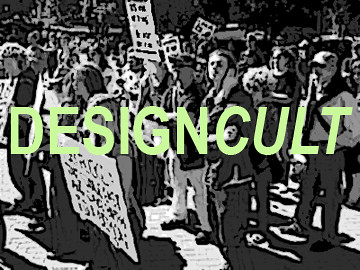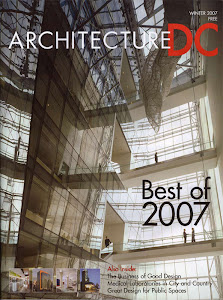“The human backside is a dimension architects seem to have forgotten.”
~ William H. Whyte
Several weeks ago I was meeting a friend for lunch in the Golden Triangle part of downtown. I arrived about 20 minutes early, which, as anyone who knows me will know, is a rarity, but figured 'no bother...I have a book to read'. Only, when I started to scope out a spot to sit and read I realized that, despite all the offices, shops, and cafes around me, there was, in fact, no public space to sit. There were, of course, those cafes, but I did not feel right sitting and waiting at an empty table while paying customers circled with food, looking for a place to lunch. And as I looked around, I realized that there was no ledge or planter, no entry or stoop, where I felt it appropriate to sit without being shooed away. So, after circling the block, I finally decided to go into the Border's bookstore at the opposite end of the block to pass the time.
Which got me thinking: Has architecture and urban planning forgotten about the individual?
When I was in college I remember a classmate who would shoo individuals from in front of whatever "great work" we were visiting. I was put off by this, not merely because I felt it rude, but also because of the simple truth that buildings exists first and foremost because of individual needs. But all too often I think that this fact is lost somewhere along the process. (Look at just about any architect's portfolio and you will notice in too many cases the lack of even the suggestion of human habitation, beyond perhaps carefully staged Mid-Century modern furnishings and a bowl of apples). Maybe it is the drive to create a great piece of beauty that leads us designers to the point that we want our buildings to be viewed as art objects. Not too close now...don't touch.
While I believe that architecture is an art, there is also that 'function' thing to remember. If architecture exists to provide space for human habitation, then shouldn't buildings in fact accommodate, rather than discourage interaction? This was of course a firm held belief of modernists, "form follows function" and all of that, but all too often it is the form that gets the glory.
A disheartening trend throughout this city recently has been the loss of arcades. This is mostly done for gain on the part of the building owner; a means to increase lease space. There are those that will tell you that arcades, in the end, only gather leaves, debris, and bums, but the reality is that they serve several very useful purposes. First and foremost they exist as an interstitial space, transitioning between the 'public' sidewalk and 'private' interiors of the buildings, which in effect also extend the width of the sidewalk. They provide a sense of scale, clearly demarcating the pedestrian zone, as well as providing visual depth to the building. They are also by default integral sun shading devices on the faces which receive abundant light. They provide sheltered spaces for cafes. And finally their absence is certainly most sorely felt on a rainy day when their is no longer that covered path to keep you dry. There are many excuses why the arcades are vanishing from our buildings, but the real reason is the value placed on profit over amenity. The result is a tight, less articulated streetwall, and less space for the pedestrian.
Which brings us back to those benches, of which the excuse of becoming collection points for the homeless is also a commonly used excuse as to why our streetscapes are lacking these amenities. In fact take a look around and you will be surprised how many various devices there are to discourage one from resting on this ledge or that stoop. But the great irony is that if you look at our parks, such as Dupont Circle, which is full of benches, you will find that, though there are homeless here, that this has not discouraged people from using these spaces. And the reality is that the lack of benches (or the lack of arcades for that matter) does not discourage the homeless, who will and do adapt to whatever happens to be their surroundings. Like so many things, we allow our worries of what bad may happen to take priority over the good that these things can produce. Our perceptions of what is the right thing to do to keep an area clean and safe are unfortunately all too often skewed. And we as city dwellers suffer.
This summer I've decided to reread Jane Jacobs' "Death and Life of Great American Cities", and one of the first things that she tells us in this book is the value of having many eyes on the street, which are encouraged by having public places for people to gather. This is why street cafes are so valuable to our city (another point of contention for some), but also why those benches are so important. They provide and furthermore encourage places for us to stop, rest, gather, and watch the city around us. Yes, there are those parks with their benches, but as Jacobs also tells us, these parks, especially those which are removed from the street in one manner or the other, do not have the same affect. But furthermore, shouldn't it be our goal to create cities which first and foremost create engaging spaces for the inhabitant, specifically the pedestrian?
In this age of sustainability, we should be encouraging people to enjoy our sidewalks. In this time of urban resurgence, we should be creating great urban streets that encourage and place priority on the pedestrian. In this period of economic downturn, we shouldn't have to pay for a cup of coffee in order to have a place to sit and read. As designers, we need to do a better job of remembering who we are designing for.
Read more!
Thursday, August 13, 2009
Standing Room Only
Subscribe to:
Posts (Atom)








